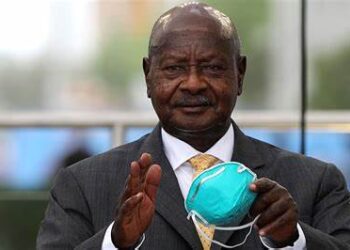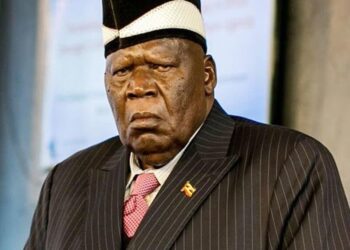Martyrs’ Day in Uganda, observed annually on June 3rd, marks the harrowing sacrifice of 45 young men, both Catholic and Anglican, who were mercilessly executed between 1885 and 1887 by the brutal decree of Kabaka Mwanga II, the king of Buganda. This grim chapter in history has seared itself into the soul of Uganda, endowing Martyrs’ Day with profound religious, cultural, and national significance, and making it one of the most pivotal commemorations in the country’s calendar.
To grasp the full import of Martyrs’ Day, we must first navigate the turbulent waters of late 19th-century Buganda, a formidable kingdom that once stood where modern Uganda now flourishes. During this epoch, Buganda was a beacon of power and influence. However, the arrival of Christian missionaries—Catholic White Fathers and Anglican Church Missionary Society—infused the kingdom with new religious fervor, disrupting its predominantly traditional African religious practices and the presence of Islam.
Kabaka Mwanga II, who ascended to the throne in 1884 amidst significant political and religious upheaval, initially welcomed the missionaries. Yet, he quickly perceived them as a dire threat to his sovereignty. The rapid conversion of many of his subjects, including pages and officials, to Christianity, shattered the traditional power structures and directly undermined his rule.
The catalyst for the brutal executions was a toxic brew of political and religious friction. Mwanga II was particularly incensed by the steadfast refusal of his Christian subjects to bow to his authority—a blatant challenge he could not tolerate. This defiance was especially potent among his court pages, who, fortified by their Christian convictions, resisted his advances and rejected participation in traditional rituals that contravened their new faith.
On May 25, 1886, Mwanga ordered the wholesale arrest of all Christian converts among his pages. In a savage spree between May 26 and June 3, 1886, these young men were subjected to unspeakable torture before being executed. The most infamous site of this carnage was Namugongo, where 22 Catholic and 23 Anglican converts were horrifically burned alive. These public and gruesome executions were intended as a stark deterrent to any others contemplating defiance through conversion to Christianity.
Contrary to Mwanga’s intentions, the martyrdom of these young men had a seismic impact, both locally and globally. Instead of stifling the spread of Christianity, their martyrdom ignited a fervor that galvanized the faith of many and drew international attention to the persecution of Christians in Buganda. Their unwavering bravery and fortitude in the face of death inspired a wave of conversions, transforming them into potent symbols of faith and resistance.
The Catholic Church embarked on a solemn journey to honor these martyrs, culminating in the beatification of 22 Catholic martyrs by Pope Benedict XV in 1920. This recognition reached its zenith with their canonization as saints by Pope Paul VI on October 18, 1964. This monumental event resonated far beyond Uganda, cementing the martyrs’ legacy within the global Catholic community and underscoring the universal nature of their sacrifice.
For Uganda’s Catholic and Anglican communities, Martyrs’ Day is an occasion to honor and reflect upon the ultimate sacrifice of these martyrs. The day serves as a poignant reminder of the invincible strength and resilience of faith in the face of persecution. The canonization of the Catholic martyrs by Pope Paul VI amplifies the global significance of their sacrifice and reinforces their story’s vital place in the broader narrative of Christian martyrdom.
Beyond its religious implications, Martyrs’ Day holds immense national significance. It is a public holiday in Uganda, punctuated by solemn ceremonies, prayers, and pilgrimages. The most iconic event is the annual pilgrimage to the Basilica of the Uganda Martyrs at Namugongo, the very site of their martyrdom. This pilgrimage attracts hundreds of thousands from Uganda and beyond, drawing pilgrims from across Africa and the globe, who gather to pay homage to the martyrs.
This day of remembrance fosters a profound sense of national unity and identity, transcending religious boundaries. It commemorates a watershed moment in Uganda’s history that has indelibly shaped the nation’s cultural and spiritual landscape. The martyrs’ story is woven into the very fabric of national consciousness, epitomizing the enduring values of faith, courage, and resilience.
One of the most striking manifestations of the martyrs’ enduring influence is the annual pilgrimage to Namugongo. This pilgrimage stands as one of the largest Christian gatherings in Africa, with pilgrims undertaking arduous journeys on foot from all corners of Uganda and neighboring countries. This pilgrimage is not merely a physical trek but a profound spiritual journey, reflecting the pilgrims’ deep devotion and connection to the martyrs’ legacy.
The martyrs’ story has also seeped into Ugandan culture through various forms of expression, including music, dance, and literature. Songs and dances celebrating the martyrs are performed during commemorations, reflecting the deep cultural roots of this event. Literature and oral traditions continue to perpetuate the story, ensuring that each generation comprehends and cherishes the martyrs’ profound sacrifice.
Martyrs’ Day has evolved into a critical platform for interfaith dialogue and cooperation in Uganda. The shared history of martyrdom between Catholics and Anglicans fosters a spirit of unity and mutual respect. Joint commemorations and prayers underscore the unifying power of the martyrs’ story in bridging religious divides.
Martyrs’ Day in Uganda transcends mere commemoration of a tragic historical event; it is a vibrant celebration of faith, courage, and resilience. The story of the Ugandan martyrs continues to inspire and unify people, cutting across religious and national boundaries. It serves as a powerful testament to the strength of the human spirit in the face of relentless persecution and the enduring impact of faith and sacrifice on a nation’s identity and cultural heritage.
The legacy of the Ugandan martyrs stands as a monumental testament to the profound influence of these young men who stood resolute in their faith and paid the ultimate price. Their story is deeply embedded in the national consciousness of Uganda, shaping its religious, cultural, and social fabric. As Ugandans and pilgrims from around the world gather each year to honor their memory, the martyrs’ legacy lives on, inspiring generations to come with their indomitable spirit and unwavering faith.







Discussion about this post